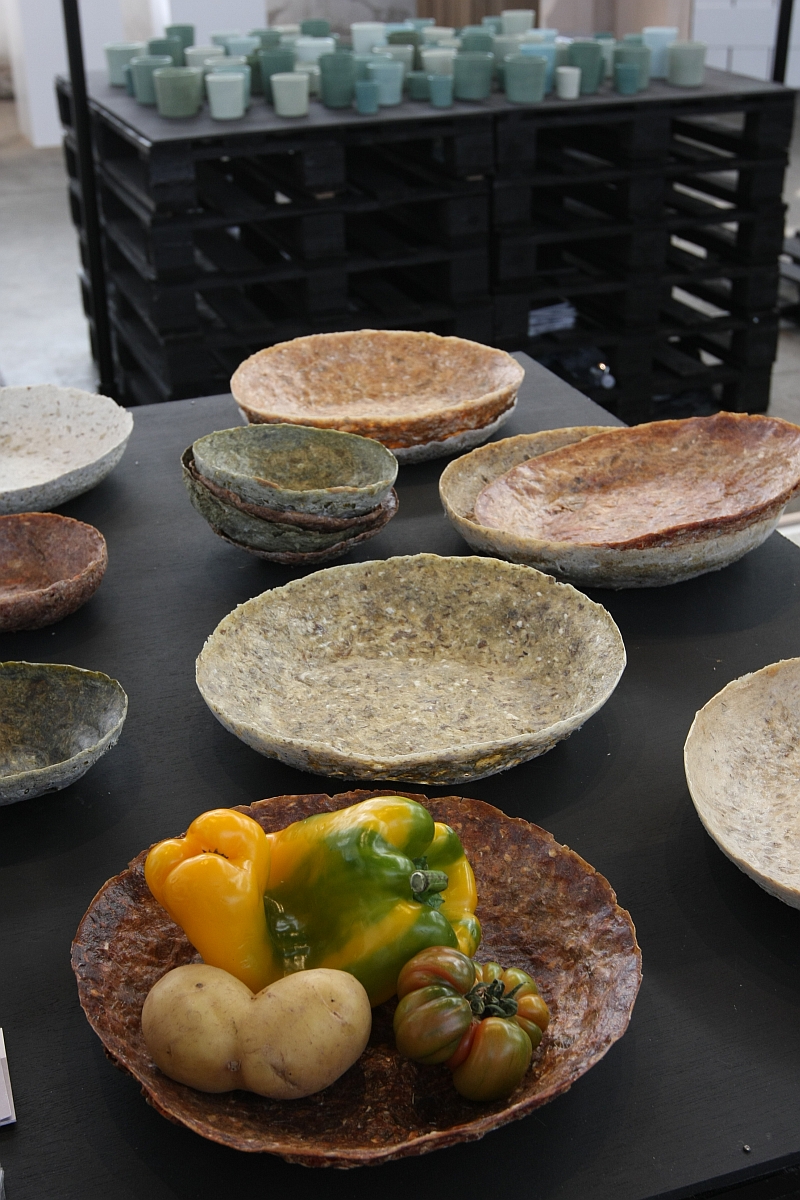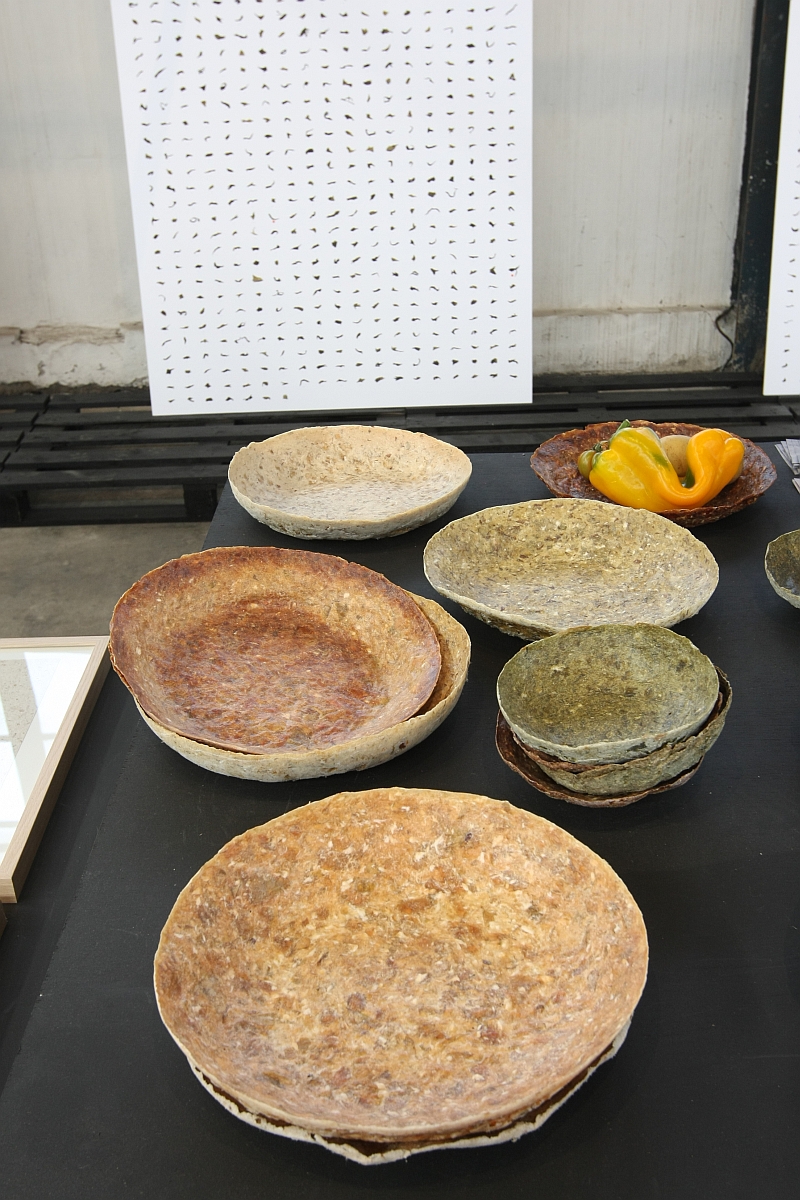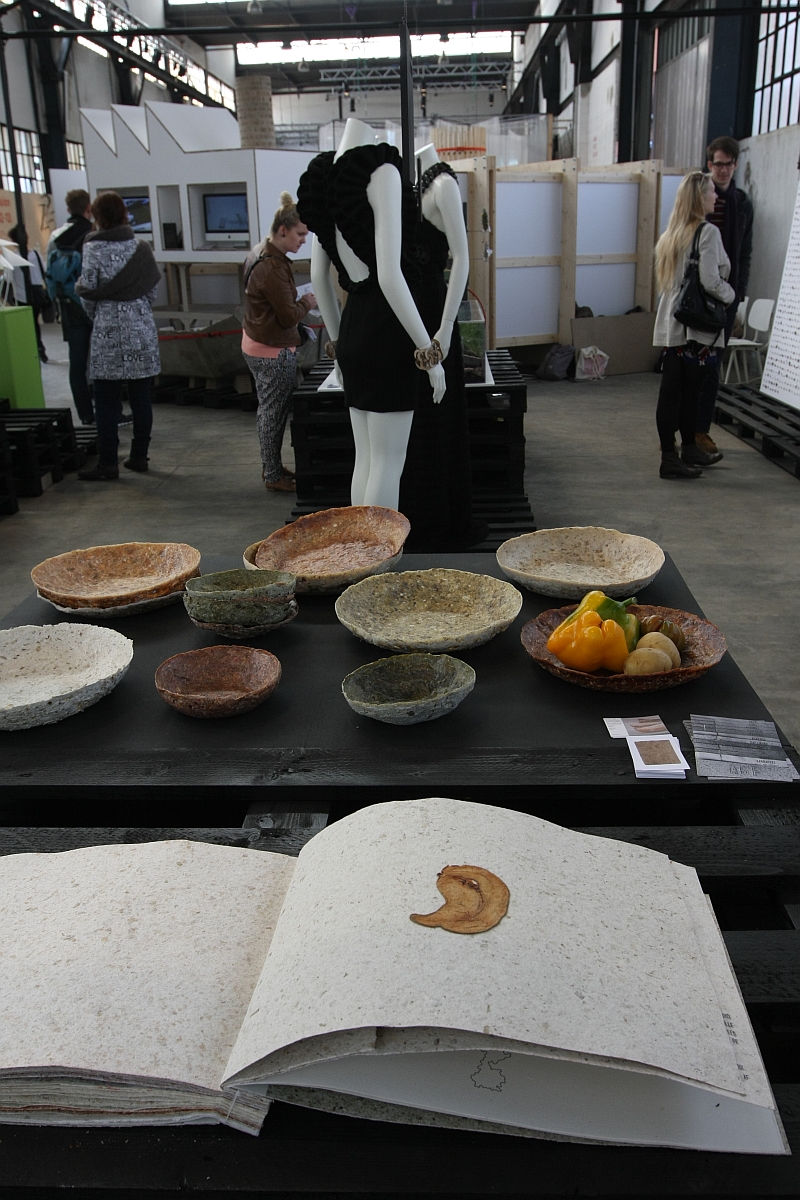Milan Design Week 2013: AGF Class 3 Bowls by Renee Boute
Many of you will remember the exhibition “Great Taste for Waste” that was staged at Dutch Design Week 2011
AGF Class 3 Bowls by Renee Boute would have been a wonderful addition.
AGF is an abbreviation of “Aardappelen, groenten en fruit” -“Potatoes, vegetable and fruit” – and Class 3 refers to quality Class 3, so damaged examples that can no longer be introduced into the food chain. Or at least not into the “individual” food chain.
Utrecht School of the Arts’ graduate Renée Boute took these rejected/damaged goods and initially created a range of paper.
Each paper produced from a single fruit, veg or tuber. And consequently each with its own structure, haptic and colour.
What Renée did next is however what really appeals to us.
Applying a similar technique to that used to manufacture the paper, Renée Boute has created a series of bowls.
Again each created from a single item and so with its individual character.
As Renée says through the research she has created two series of objects that not only visualise the food waste generated every day, but have also transformed the role of Class 3 products by 180 degrees. Waste becomes a valuable material.
What really excites us about the bowls however is the global applicability of the production process.
Using agricultural land to produce, for example, bio-diesel is rightly a controversial subject.
Sensible as the use of renewable resources unquestionably is, one must also guarantee that basic food needs can be met before one starts using agricultural products for other ends.
But agricultural waste is a different matter.
Just to be clear, with Class 3 products we’re not really talking about objects that don’t meet some artificial, pre-set size, length or colour standard, but much more have suffered, for example, hail damage or have some form of biological infestation that makes then unsuitable for consumption
At the moment the majority of Class 3 waste is composted, burned or used for animal fodder.
But if one can use it to create biodegradable, every day objects, then for us that is a positive and sensible development.
Not only has one the obvious environmental advantages but much more one has a relatively simple process that doesn’t involve any great investment in machines or complicated training.
As such, such a production method is truly universal and can be applied on a small scale, as required basis, or even as and when the raw materials are available.
And the more communities who can produce their own household goods from locally “generated” agricultural waste, the less mass production, distribution and potential disposing of such goods is required.
Time will tell how the project develops, but for us the research undertaken thus far is certainly something worth pursuing and developing.
Tagged with: AGF Class 3 Bowls, Renee Boute


